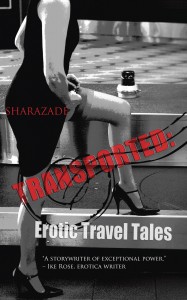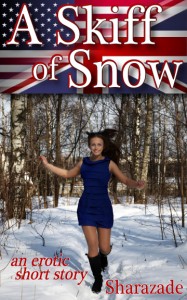I wasn’t quite sure I should review this book at first — it’s “steampunk,” you see, and I had no idea what that actually was. I felt in any case that it was only fair to warn the author, but he seemed quite unconcerned, and that’s what convinced me. I figured if the author was that confident that someone unfamiliar with the genre would enjoy it and review it fairly, then I should go ahead and give it a try.
I’d like to say I did some serious background research into steampunk, but let’s be honest — I checked wikipedia and emailed a few friends. Most definitions seem to start with “It’s kind of like” — It’s kind of like alternate history, it’s a little like science fiction, it’s sort of like historical fantasy. Then you get a lot of examples, which apparently not everybody can agree on, so these authors/filmmakers may or may not exemplify steampunk: Jasper Fforde (I’m a huge fan), Hayao Miyazaki (can’t stand his films), Jules Verne (he’s OK), Mark Twain (what? huh? But that’s what wiki says…), The Golden Compass (a far better book than movie), Sky Captain and the World of Tomorrow (I enjoyed it). So it was a little hard for me to tell from this exhaustive (ahem) research whether steampunk would turn out to be “my thing” or not.
In a way, it reminded me of re-reading 1984 a few years ago (note: 1984 is not, as far as I know, considered steampunk). I first read 1984 in the late ’70s, when it was still set in the future. Now, of course, it it technically set in the past — and yet it still reads as if it’s the “future.” So it’s a sort of … “other future” that still seems nostalgic in a way, because of the past-ness in the prose and some of the setting. Steampunk strikes me like that — it’s the past, and it isn’t; it’s the future, and it isn’t; it’s our world, and it isn’t.
As such, it works nicely for me. One of my difficulties with some science fiction is how long it takes you to figure out the whole reality. You get pages and pages (and if you are unlucky, chapters and chapters) of things like “Xyr knew he had to wharrump the morytyr of Haxio, or he would never be able to enphusiate the Zingy of the grand wowzeer.” Some days… I just don’t want to work that hard at my fiction, you know? I want names I can say in my head and actions I can follow. Crazy, but there you are, that’s me. So an alternate reality in which some of the settings and background and devices are familiar helps me open up to those that are different.
This work is a collection of six long-ish short stories. I didn’t always get pronounceable-in-my-head names from these stories, but I’m going to forgive that because they were great reading. The first ones I’m not even sure I’d classify as “erotica,” really, but rather stories that had, at some point, some erotic elements and scenes. The later stories were more erotic, including one with some lovely BDSM-ish scenes, and it’s on the basis of those that I decided to put the review here on my blog. So it’s certainly not a volume of, well, wank material. But it’s got some uncanny insights into people’s motivations for having sex, and then some delicious descriptions of what they do together.
The stories, though they each stand alone, are all about the same “world,” and some characters recur, which gives the collection a nice unity. The settings are rich (although I didn’t notice much actual steam… is that necessary for steampunk?), but what I liked best were the characters and the plots. I had an e-book version, so I don’t know if I could call it a ‘page turner,’ but it was certainly a ‘screen scroller.’
I loved the literary allusions, too, which added an extra layer. Some are quite obvious (one story is a re-telling of Stevenson’s Jekyll and Hyde tale), some less so (I don’t know if people still read Bunyon’s Pilgrim’s Progress?) and others are more obscure (The Perfumed Garden, which I’ve heard of but never read). Some places mentioned exist (Samarah) and some I wasn’t sure about (Arimaspia). As is the nature of such things, you smile when you find something familiar (a character at one point sings “Pirate Jenny” — I used to sing that while mopping the floors of a house I lived in), but if the reference doesn’t ring a bell, it doesn’t keep you from understanding or enjoying what’s going on.
A nice surprise at the end of the collection was a commentary by the author on each story, with notes on where he got his ideas and why he chose some of the elements he did.
It’s an intelligent, well-written collection. I’d recommend it to those who already like steampunk, and also to those who, like me, are trying it out for the first time. Based on this collection, I’d read more.
Get your own copy of The Innocent’s Progress here at Amazon for the Kindle and here from the publisher (Circlet Press) in other e-formats. Circlet also has links there to other e-book distributors such as Smashwords and All Romance eBooks, if you have a favorite.
* * * * *






